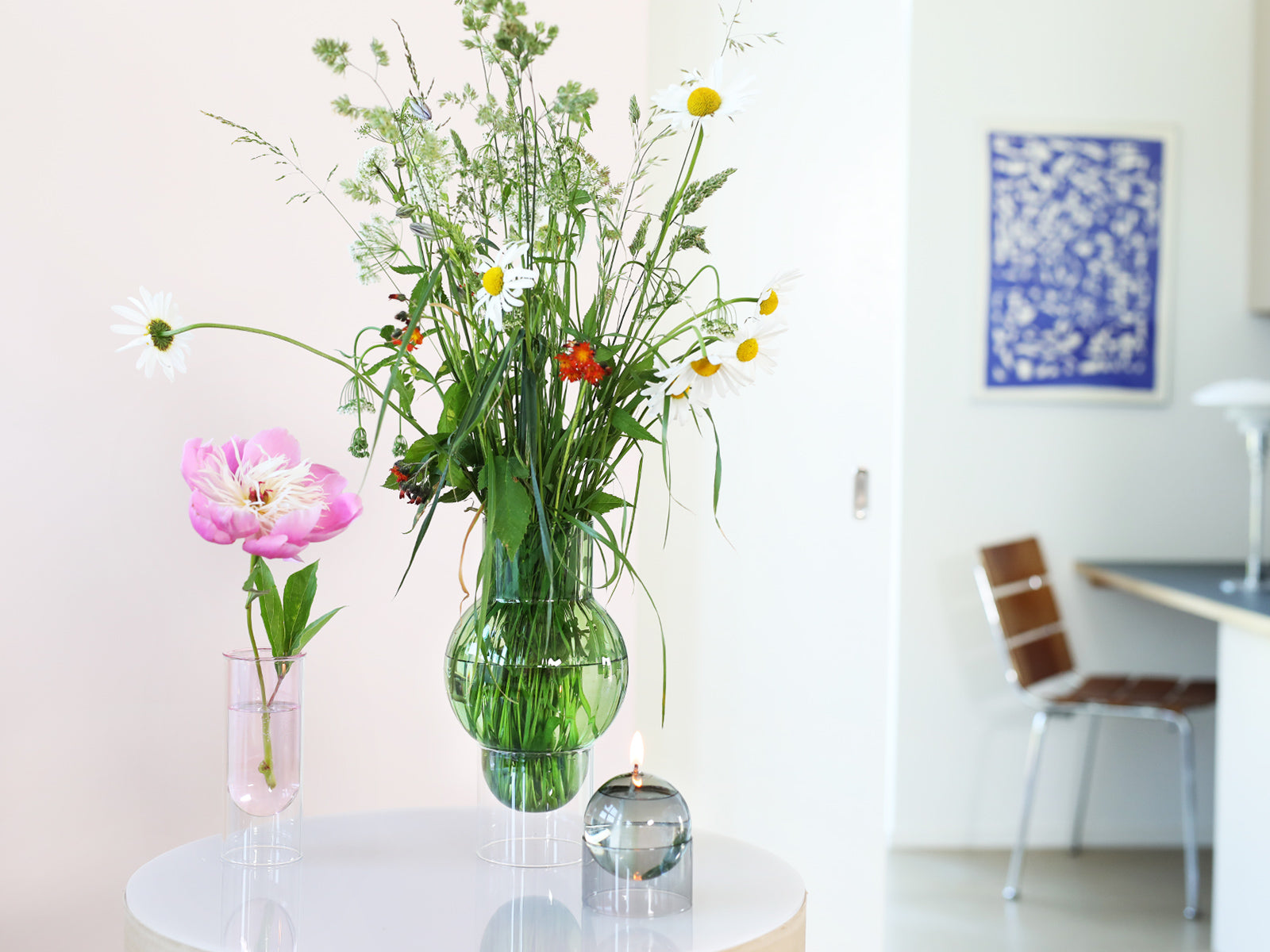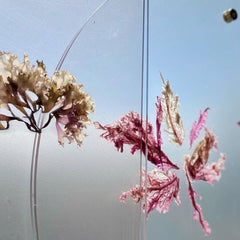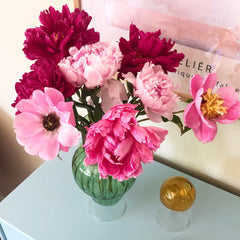
Spring is over and summer has begun. We can enjoy all the beauties of nature outside, but also bring joy by taking them inside.
In this article, we focus on the wild plants that are around us, as well as some beautiful old plants that do something good for biodiversity. The slightly untamed, wild expression is gaining a foothold in Danish gardens and everything no longer has to be stringy. It can be a bit of an accomplishment, but is to the delight of both humans and animals.

THE ELEGANT ROUND OIL BUBBLE, ON THE SIDE OF THE VASE, HAS JUST COME IN STOCK, FIND THEM HERE.
WILD SUMMER BOUQUET WITH DAISIES AND POPPIES
MARGUERITE
There is nothing as Danish as a bouquet of red poppies and daisies. In the picture above, we have picked a neat bouquet of these two beauties. The vase is a green Bubble Tube .
The beautiful white Daisy, also called Oxeye, is a delight for the eyes, but also for the insects. It's a perennial, which means it comes year after year. It blooms from late May until August and self-sows extensively. You prolong the flowering by nipping off the withered flower heads.
Although the flower is not opulent, the plant with its simple expression has been given the status of Denmark's national flower, inspired by the classic Georg Jensen Daisy earrings, and has become our Queen's nickname "Miss Daisy".
This beautiful perennial is perfect as a cut flower and lasts a long time in vases, and the best part is that it is often found wild in ditch edges or self-sown outside around allotments.
POPPIES
We all know poppies from the Danish ditch edges and fields, but poppies also fit beautifully into gardens. They are available in an incredible number of colors and self-sow easily, as each single bloomed bud contains several thousand new seeds.
Poppies are probably one of the most elegant flowers in the wild Danish nature, the parchment-thin leaves blow gently at the slightest breeze and the stem dances with every movement. Poppies are therefore also very difficult to make last long in vases, but you can try one of the following tips to extend the shelf life inside.
- Then pick and burn the stem with a lighter.
Or
- Pick and put them in almost boiling water.
Giant poppies, Papaver, have really gained traction in recent years and understandably so. The large flower heads the size of a saucer give the garden a light and adventurous look. You can enjoy poppies in fields and in the garden from June to July and are available in a choice of colours.
PROPAGATION OF POPPIES
At the end of summer, you can collect the seed pods from the beautiful poppies and expand your garden with more species.
- Pick seed pods when they are completely brown, dry and rustling.
- Turn them upside down in a glass or in a coffee filter.
- Let all the seeds fall out, then leave them to dry for a week.
- When the seeds are completely dry, you can store them in bags or coffee filters, so they are ready to sprinkle out in the garden.
- Poppies should ideally be sown directly on their permanent growing site.
- The seeds need cold, so sprinkle them out in late autumn or in February.
- The seeds are so small that they just have to lie on the ground and do not need to be covered with soil.

FAVORITES IN THE GARDEN JUNE AND JULY
Many can be mentioned here, but we have selected some that we love to use in bouquets and the garden.
- Peonies
- Poppies
- Iris
- Perennial lily
- Mint
- Proud cavalier
- Furry lion's foot
READ MORE ABOUT HOW YOU CAN MULTIPLY AND USE COINS HERE.

SEE THE WHOLE COLLECTION OF FLOWER TUBES HERE.
PERENNIALS THAT TAKE CARE OF THEMSELVES
We have styled our Flower tube with a little blue iris and yellow lilies. The characteristic of both plants is that once they take hold you will have them for many, many years, where they will eventually grow and fill up well.
BLUE IRIS
The blue perennial iris, also called garden iris, is an elegant and easy plant. It does not require much and can tolerate a place in full sun. Garden iris is a tuberous plant and can be bought as tubers that are buried or as ready-made plants. Remember the name of your Iris and read more about the plant's requirements before you dig it in, and you will have the most success.
LILIES
Lilies are one of our oldest garden plants. They can be planted as bulbs or ready-made plants, but can be a bit more difficult compared to the soil you place them in. The lily in the picture is a yellow daylily, it smells strongly of citrus. However, there are hundreds of varieties and hybrids, so it's just a matter of going in search of your favorite.
GRASS AND NICE WEEDS
Actually, there is no such thing as a weed, but the term "weed" is about plants that grow in places we don't want them. We have put together a bouquet here, with a bit of what we normally think of as weeds. It is wild-growing grass in various varieties, Swiss chard that has gone into flower and the beautiful orange-red perennial Pomeranian sedge.
A bouquet can be many things, and it's all about trying yourself out. Let your garden grow a little more and don't remove anything you don't know or think are weeds. After a while, you will probably be pleasantly surprised by the diversity and at the same time help to be about the Danish wildlife.

Combine your vases and create a still life, here it is a rose Flower tube , a green Bubble tube and an Oil bubble in smoke.
This bouquet looks beautiful in our green Bubble tube , where the orange-red flowers compliment the vase and at the same time create coherence with the green grasses and contrast with the white cabbage screens.
SEE THE ENTIRE SELECTION OF THE ELEGANT FLOWER TUBES HERE AND FIND YOUR FAVORITE.



